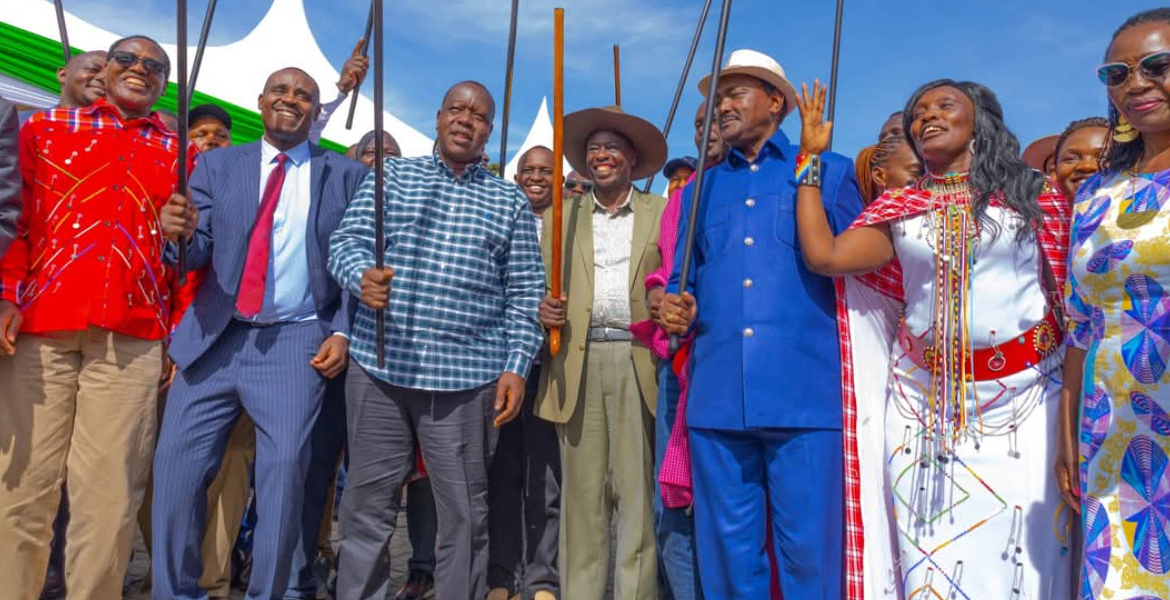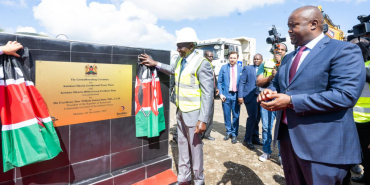Kenya’s Opposition Alliance Faces Internal Divisions in Bid to Block Ruto’s 2027 Re-Election

As Kenya gears up for the 2027 general election, the opposition is embarking on an ambitious campaign to prevent President William Ruto from securing a second term.
The coalition, comprising prominent political figures including Rigathi Gachagua, Kalonzo Musyoka, Martha Karua, Eugene Wamalwa, Fred Matiang’i, and George Natembeya, aims to make Ruto a one-term president, a feat unprecedented in Kenyan electoral history. Despite the alliance's burgeoning momentum, it faces internal and external challenges that could undermine its aspirations.
At the forefront of these challenges is the issue of internal cohesion. While the coalition publicly professes unity, simmering tensions are evident behind the scenes. Sibling rivalry among constituent parties is already apparent, with Gachagua’s Democracy for Citizens Party (DCP) reportedly asserting dominance in ways that have unsettled other members. Disagreements over candidate nominations, exemplified by the Mbeere North by-election, have exposed fractures that could widen as the election draws nearer.
Former Interior CS Matiang’i has acknowledged the difficulty of achieving consensus, warning that loyalty to individual parties may complicate efforts to forge a unified front. Further exacerbating these internal tensions is the potential for infiltration. Gachagua has admitted that the alliance has been compromised by individuals allegedly working for rival interests.
Another pressing concern is the influence of political financiers—both domestic and international. While financial backing is essential for any serious campaign, the opposition risks becoming indebted to “wheeler-dealers” whose interests may not align with the coalition’s reformist agenda. Political analysts caution that such actors, particularly those with questionable backgrounds, could dilute the movement’s credibility and derail its mission.
Perhaps the most significant hurdle lies in selecting a presidential flag bearer. With multiple aspirants—including Kalonzo, Gachagua, Karua, Matiang’i, Wamalwa, and Natembeya—vying for the top seat, the process of narrowing down to a single candidate is fraught with political peril. Each contender commands a distinct regional base and ideological following, making consensus elusive. The coalition must also navigate Kenya’s deeply entrenched ethnic voting patterns, where nearly 50 tribal blocs exert influence over electoral outcomes.
Political scholar Peter Kagwanja observes that the candidate selection process is often distorted by ethnic entitlement, with communities rallying behind candidates under the banner of “it’s our turn to eat.” This dynamic further complicates the already challenging task of uniting diverse political factions behind a single presidential nominee.
Legal and constitutional hurdles also complicate the opposition’s path. Gachagua, for instance, is currently facing an impeachment case that could disqualify him from contesting. Even if a candidate emerges, they must meet stringent electoral thresholds, including securing over 50% of the national vote and at least 25% support in 24 counties—a feat that demands broad-based appeal and meticulous planning.
The coalition must also prepare for inevitable fallouts. The process of negotiating shared benefits, conducting primaries, and forming a national contest lineup is notoriously volatile. Political scientist Festus Wangwe likens it to navigating a minefield, predicting that only a political miracle could see the alliance reach 2027 intact. Historical precedent supports this view; opposition coalitions since 1992 have consistently fractured under the weight of competing ambitions.
Looking back at the last three decades in Kenyan politics, since the introduction of multi-party democracy, opposition alliances have consistently struggled to maintain cohesion and unity, and ultimately failed to unseat the incumbent president. Internal wrangling, personality clashes, and conflicting agendas have often led to the dissolution of these alliances.








Add new comment